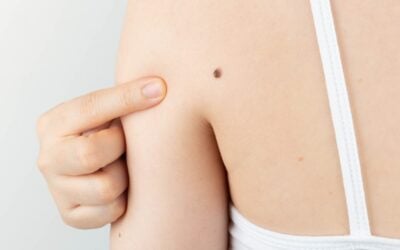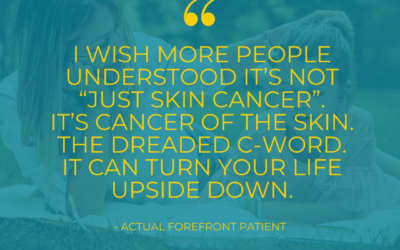
Anyone can get melanoma skin cancer no matter the color of their skin. In fact, black reggae legend Bob Marley died at the age of 36 from melanoma skin cancer that had spread in his body.
What is Melanoma?
Melanoma is the deadliest skin cancer with cases tripling over the last 30 years. While People with Skin of Color are diagnosed with melanoma less often, research has shown they are up to four times more likely to be diagnosed with advanced-stage melanoma and 1.5 times more likely to die from melanoma.
What is the risk of Melanoma in People with Skin of Color?
According to the American Cancer Society, the lifetime risk of developing melanoma is 1 in 1,000 for Blacks, 1 in 167 for Hispanics, and 1 in 38 for whites.
Where does Melanoma most commonly develop in People with Skin of Color?
Studies have found that in Caucasians more than 90% of melanomas are found on sun-exposed skin. In People of Color, close to 75% of melanomas are found on the palms, soles, mouth, genitals and under the nails.
What is acral lentiginous melanoma?
According to Dr. Viba Malaiyandi, board-certified dermatologist with Forefront Dermatology, “There are different types of melanomas. In those with Skin of Color there is a higher percentage of developing acral lentiginous melanoma, also known as acral melanoma or ALM. ALM is a rare type of melanoma that occurs on the palms, soles of the feet, or under the finger and toenails. Unlike other forms of melanoma, ALM is not believed to be caused by exposure to the sun or other sources of UV radiation such as tanning beds. ALM commonly begins as a patch of discolored skin or discoloration under the nail plate, often much darker than the surrounding skin, which gets bigger over time. Delay in the diagnosis and treatment of melanomas in black patients is multifactorial. One factor is due to misconceptions, such as that melanomas only occur in sun-exposed areas and that people of color are not at risk for melanomas. Because of this melanomas are diagnosed at later stages in people with skin of color resulting in worse outcomes.”
According to Dr. Malaiyandi, it is important for People of Color to look for the symptoms of all skin cancers, including acral melanoma. Be on the lookout for:
- A new streak in a nail that is not caused by an accident or bruise
- a nail streak that has damaged the fingernail
- a changing spot in or connected to a mole on the foot or hand
- an irregularly-shaped growth on the foot or hand that is changing, growing, or has an unusual color
- an elevated, thickened patch growing on the sole of the foot or palm of the hand
Death rates from ALM are higher than those of other forms of melanoma. This is likely a result that ALM can go unnoticed longer, allowing it to spread and become more aggressive before treatment begins.
When it comes to stopping melanoma in its tracks, early detection is key and can truly mean the difference between life and death. Skin cancer exams are a 10-minute appointment where your board-certified dermatologist will thoroughly examine your body for any unusual spots. This is the time for you to point out any spots that you have noticed as new or changing. Find a dermatologist near you and schedule your annual screening today!





